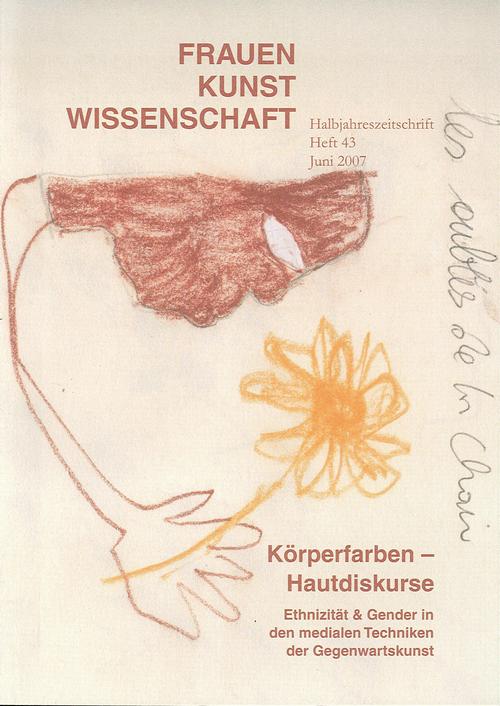Sichtbarkeit als Aporie – Zum Diskurs über die Haut(farbe) in Douglas Sirkas Imitataion of Life
DOI:
https://doi.org/10.57871/fkw4320071076Abstract
Ursula von Keitz
Visibility as an Aporia. On the Discourse on Skin (Color) in Douglas Sirk’s Imitation of Life
One of the most important efforts in the development of color film technology was to accurately and realistically reproduce human skin color. In the mid 1930s, it became possible for cinematography to depict the full spectrum of skin colors. From that time on, feature films in the Western culture established a semantic classification of the gendered person which black-and-white films had only been able to display in shades of gray. Fair female skin was closely related to a white middle-class existence and associated with a high moral tone. The darker hue of male skin was associated with vitality (and outdoor activities in general). Women with a darker skin color, in contrast, were often explicitly sexualized and were closely associated with moral transgression. In Sirk’s Imitation of Life, released in 1959, a young light-skinned woman, born to a black mother, struggles for identity in a world of racial discrimination. She passes as “white” (and the film shows us the real difference between her skin colors and that of her mother in many scenes), because whiteness is the only color that can lead to social success. Thus the film reflects on the particular problem of the visible character in a medium of visibility. By constructing herself as white and positing appearance as essence, the light-skinned “black” woman unmasks the social construction of any racial difference.
Downloads
Veröffentlicht
Ausgabe
Rubrik
Lizenz
Die Autor_innen behalten das Copyright und treten keine exklusiven Nutzungsrechte an FKW ab.
Ab 2017 erscheinen alle Texte von FKW // Zeitschrift für Geschlechterforschung und visuelle Kultur unter der LizenzCC-BY-NC-ND Lizenz 4.0 International (Creative Commons, Namensnennung, Nicht Kommerziell, Keine Bearbeitung 4.0 International). Der Lizenzvertrag ist abrufbar unter: https://creativecommons.org/licenses/by-nc-nd/4.0/legalcode.de, eine allgemein verständliche Fassung unter: https://creativecommons.org/licenses/by-nc-nd/4.0/deed.de
Von 2013 bis 2016 sind alle Texte von FKW // Zeitschrift für Geschlechterforschung und visuelle Kultur unter der Digital Peer Publishing Lizenz (DPPL) erschienen. Der Lizenztext ist im Internet abrufbar unter der Adresse: http://nbn-resolving.de/urn:nbn:de:0009-dppl-v2-de3
Die Abbildungen in Ihrem Beitrag
Die Autor_innen verpflichten sich, die Abdruckgenehmigung für die in ihren Texten verwendeten Bilder bei der jeweiligen, die Bildrechte verwaltenden Institution einzuholen und die zuständige Herausgeberin über das Ergebnis zu informieren. Wir weisen darauf hin, dass die Verwendung von Bildern in wissenschaftlichen Texten gewöhnlich als Zitat angesehen und entsprechend kostenfrei gewährt wird.





